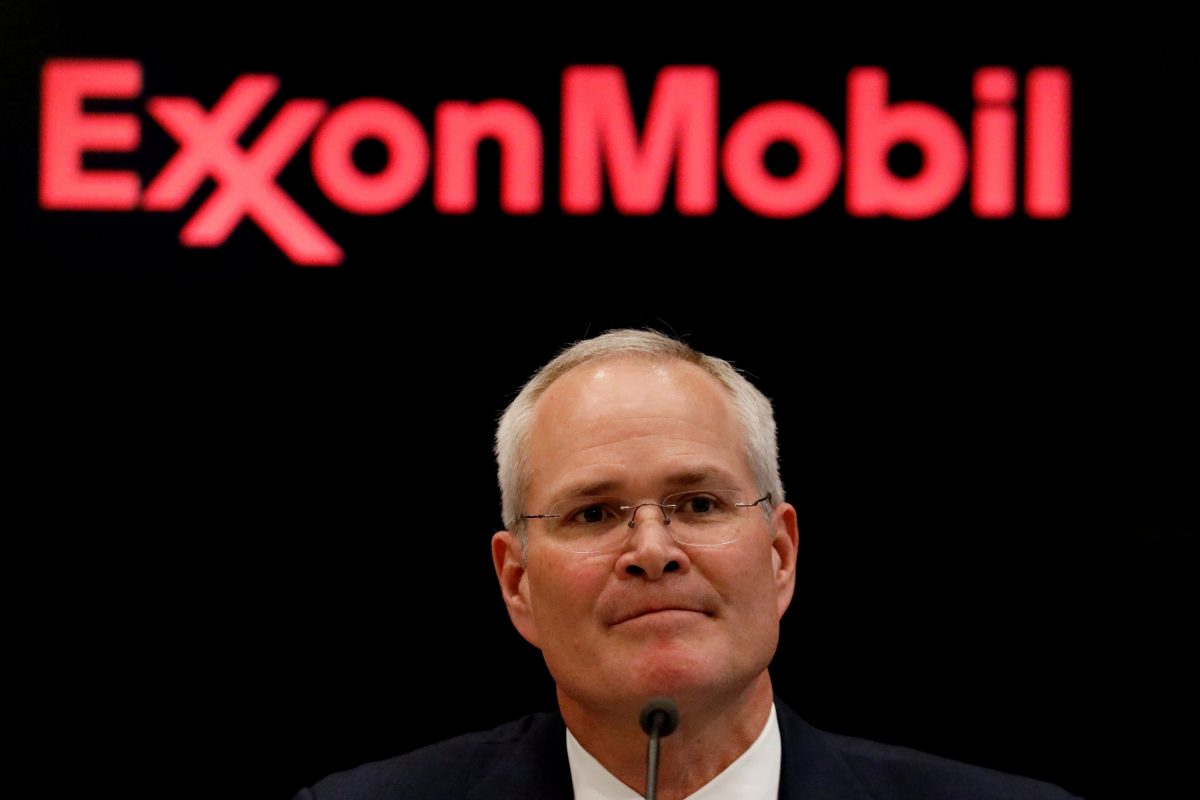Exxon Mobil Corporation yesterday announced estimated first quarter 2021 earnings of US$2.7 billion, or US$0.64 per share assuming dilution, compared with a loss of US$610 million in the first quarter of 2020, according to Businesswire.
Oil-equivalent production was 3.8 million barrels per day, up 3 percent from the fourth quarter of 2020. Excluding entitlement effects, government mandates and divestments, oil-equivalent production was up 2 percent, Businesswire said.
Guyana’s offshore wells are now a key part of ExxonMobil’s production portfolio.
“The strong first quarter results reflect the benefits of higher commodity prices and our focus on structural cost reductions, while prioritizing investments in assets with a low cost of supply,” said Darren Woods, chairman and chief executive officer. “Cash flow from operating activities during the quarter fully covered the dividend and capital investments, and we strengthened the balance sheet by reducing debt. We also made progress on our energy transition strategy by launching our new ExxonMobil Low Carbon Solutions business, which is initially working to develop innovative, large-scale carbon capture and storage (CCS) concepts, including the evaluation and advancement of more than 20 new opportunities, such as a multi-industry hub to reduce emissions from hard-to-decarbonize industries near the Houston Ship Channel. As the global leader in carbon capture, we are seeing growing public and private sector support for CCS as a critical enabling technology to reduce emissions and help meet society’s net-zero ambitions”, Woods added.
First Quarter 2021 Results and Business Highlights follow:
Upstream
Average realizations for crude oil increased 42 percent from the fourth quarter. Natural gas realizations rose by 33 percent in the quarter.
Total production volumes increased 98,000 oil-equivalent barrels per day from the fourth quarter. Excluding entitlement effects, government mandates and divestments, liquids volumes were down 3 percent including impacts from higher maintenance and the winter storm. Natural gas volumes increased 12 percent driven by higher seasonal demand in Europe.
During the quarter, production volumes in the Permian averaged 394,000 oil-equivalent barrels per day, an increase of 12 percent from the prior year. The focus remains on continuing to grow positive free cash flow by lowering overall development costs and increasing recovery through efficiency gains and technology applications.
Downstream
Industry fuels margins improved from the fourth quarter, but remained below 10-year-lows driven by market oversupply and high product inventory levels. Lubricants delivered strong performance, underpinned by lower costs and improved margins.
Despite winter storm disruptions, overall refining throughput was essentially flat with the fourth quarter as the company managed refinery operations in line with fuel demand and integrated chemical manufacturing needs.
Chemical
Industry margins improved further in the quarter reflecting continued strong demand, global shipping constraints, and ongoing supply disruptions, particularly in North America, where the polyethylene and polypropylene markets were affected by severe winter weather in Texas.
Strong first quarter Chemical earnings performance of $1.4 billion was supported by robust base operations capturing high margins and continued delivery of cost efficiencies.
ExxonMobil announced it is pursuing three new advanced recycling initiatives in the U.S. and Europe that further advance our commitment to sustainability and capture value from plastic waste at scale. The company plans to begin marketing certified circular plastics products later this year.
Strengthening the Portfolio
ExxonMobil signed an agreement valued at more than $1 billion for the sale of most of its non-operated upstream assets in the United Kingdom central and northern North Sea. The sale price, subject to closing adjustments, has potential additional upside of up to $300 million based on contingent payments associated with future commodity price increases. The transaction is expected to close near mid-year 2021, subject to regulatory and third-party approvals.
The company is progressing plans to convert both its Altona, Australia refinery, and Slagen refinery in Norway to fuel import terminals, ensuring ongoing, reliable fuel supply for their respective local markets. Final decisions were made following local consultation processes with employees and their representatives as part of extensive reviews of the long-term economic viability of both facilities.
Capital Allocation and Structural Cost Improvement
The company’s long-term capital allocation priorities remain investing in advantaged projects to drive cash flow, strengthening the balance sheet and maintaining a reliable dividend.
ExxonMobil’s 2021 capital program remains at $16 billion to $19 billion. If market conditions continue above the company’s planning basis, additional cash will be used to accelerate deleveraging.
In addition to $3 billion in structural cost reductions already achieved in 2020, the company is on pace to achieve $3 billion of further structural efficiencies through 2023 for a total of $6 billion relative to 2019. Efforts to identify additional structural savings resulting from the reorganizations completed in 2019 are continuing.
Reducing Emissions and Advancing Low Carbon Solutions
The company announced the creation of ExxonMobil Low Carbon Solutions, a new business to commercialize its extensive low-carbon technology portfolio, with an initial focus on carbon capture and storage (CCS), the process of sequestering industrial emissions and safely storing them permanently underground. CCS is considered one of the critical technologies required to achieve society’s net-zero ambitions and the climate goals outlined in the Paris Agreement.
In April, ExxonMobil introduced the innovative concept of a multi-industry CCS hub along the Houston Ship Channel and surrounding industrial areas to capture CO2 emissions from area industry, including petrochemical, manufacturing and power generation facilities. The concept would require large-scale collaboration and policy advancements among governments, private industry, and local communities.
ExxonMobil became the first company to file an application with the U.S. Environmental Protection Agency (EPA) to use new aerial technologies to detect methane emissions at oil and natural gas sites.
ExxonMobil and Porsche are testing advanced biofuels and renewable, lower-carbon eFuels, as part of a new agreement to find pathways toward potential future consumer adoption of fuels that could significantly reduce emissions.










